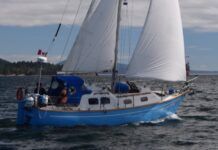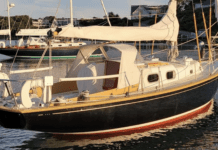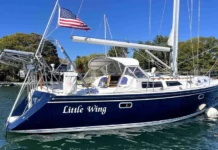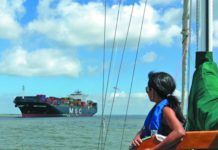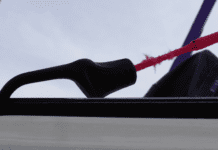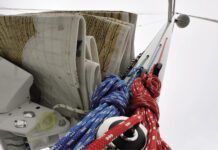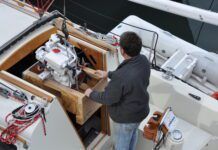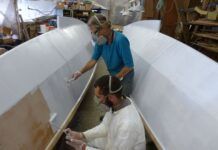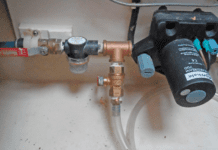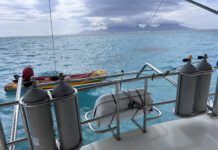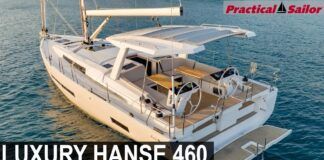Despite the fact that modern forecasting methods are far from perfect, a large storm almost always is tracked with enough precision to let you know whether youre potentially in the path of destruction. With warning of a few days or less, you don’t have a lot of time to take the precautions necessary to give your boat the best chance to survive a major storm, so it’s best to make an action plan well ahead of storm season.
Windage
When the load exerted on a boats ground tackle-whether a mooring or her own anchors-exceeds the holding power of the ground tackle, the boat will drag. One of the primary contributors to that load is the windage of the boat.
If your boat hung perfectly head to wind, the windage loading would be fairly small, consisting of the frontal area of the hull, deck structures, spars, and rigging in the case of a sailboat. Unfortunately, few boats lie perfectly head to wind through a storm. Instead, they yaw about from side to side.
As the boat sails around on her anchors or mooring, the total area presented to the wind, and hence the total loading on the ground tackle, varies dramatically. The area presented by any boat broadside to the wind is several times that presented by the same boat when it is perfectly head to wind. Since the change in wind loading is a function of the square of the wind velocity, the strain on your ground tackle increases geometrically as the boat yaws around. Reducing windage will help reduce the total loading, and hence help your boat stay put.
You can substantially reduce the windage of any boat with only a few hours of work. First, remove bimini tops, cockpit dodgers, spray curtains around cockpits, and awnings. Those are pretty obvious. The rest may not be. Sails should be removed, particularly roller-furling headsails. You don’t just have to worry about the windage of the rolled-up sails; you have to worry about what will happen when the sail unfurls. And we practically guarantee it will, no matter how well tied it may be.
Mainsails should be removed for the same reason. If the sail is so big that you can’t handle it yourself, and you have no one to help, add extra sail ties, and thoroughly and tightly lash down the sail cover. The normal securing system of the sail cover and the normal amount of sail ties used are not adequate to hold the sail in place during a major storm. If the sail gets loose, it will at least flog itself to death. At worst, it will add enough windage to make your boat drag its ground tackle.
Take off man-overboard gear, cockpit cushions, cowl vents, antennas, and halyards, if the halyards can be removed easily. Internal halyards can be run to the masthead, leaving a single halyard led to deck to allow you to retrieve the others after the storm. No matter how well you tie them off, halyards will flog the hell out of your spars, in addition to creating added windage. Likewise, masthead instrumentation may simply blow away, particularly your anemometer cups.
For more advice on preparing your boat for an upcoming storm, purchase out Bill Seiferts Offshore Sailing, 200 Essential Passagemaking Tips today!



